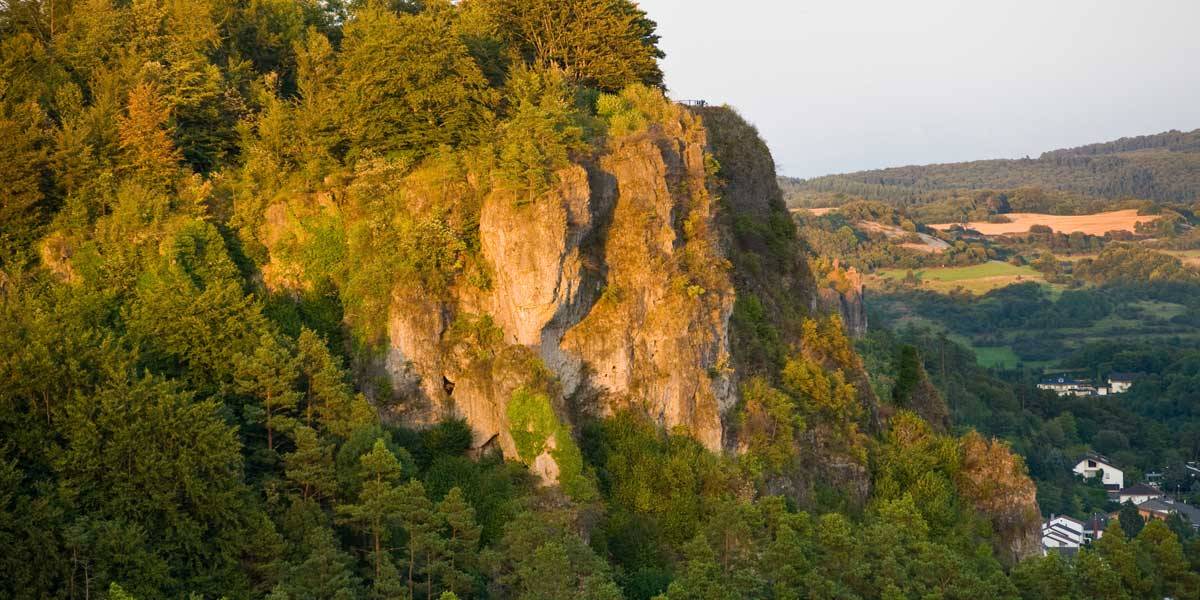Gerolstein Dolomites With Munterley 54568 Gerolstein
Around 380 million years ago there was a warm, subtropical shallow sea here, in which mighty reefs made of stromatopores and corals formed. Today, impressive dolomite rocks as well as limestone grasslands, bushes and forest ecosystems characterize the landscape.
The fountain town, famous for its mineral water, is overlooked by an impressive, vertical rock wall made of dolomite rock. Around 380 million years ago, this Gerolstein skyline was a massive reef of stromatopores, a now-extinct, colony-forming sponge-like group of animals that lived in a shallow subtropical sea.
They are called Munterley, Hustley, Drohende Ley, Große Kanzel and Auberg - the striking rock formations that line the Kyll river in the middle of Gerolsteiner Land. The medieval Kasselburg, which houses an eagle and wolf park, borders the Dolomite massif to the east. It has been protected since 1990 and is home to, among other things, bats, but also rare orchids, grasses and mosses that thrive on the calcareous, poor soil. The Gerolstein Dolomites are the habitat of numerous rare animal and plant species. Heat-loving plants such as bluegrass, pale fescue and rare mosses and lichens thrive on the dolomite rocks. Cotoneaster and rock pear can be found in rock crevices and on rock steps. The rocky crevices and karst caves offer bats ideal summer and winter quarters.
Diverse cultural landscape
The targeted reforestation of this area, which was almost completely forest-free until the beginning of the 20th century, changed the previously barren and at the same time dominating character of the Gerolstein Dolomites. In some areas, the afforestations today present themselves as largely natural mixed deciduous forests with stands of common beech, sessile oak, whitebeam, sycamore maple, hornbeam and mountain ash. In areas where unnatural coniferous forests dominate, the development of a local forest stand is being promoted. In other areas, the focus is on protecting the poor grasslands. Here, the targeted removal of bushes, pines and spruces in combination with sheep grazing has been able to preserve the biodiversity of the limestone grasslands typical of the landscape with their rare species of orchids, pasqueflowers and limestone finials.
One of the Eifel's special leisure paths, the rock path as the northern part of the “Gerolsteiner Dolomiten Acht” circular tour, opens up the rock massif. Climbing is also permitted on the Hustley.

